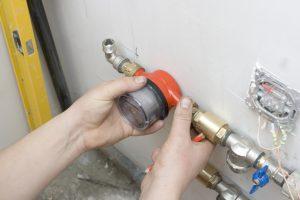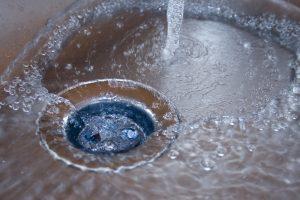With a little knowledge and preparation, you just may avoid a plumbing catastrophe!
Imagine your home without a flushing toilet, fresh water, a kitchen sink, or a hot shower. Thanks to home plumbing systems, such a scenario seems unthinkable. Until a clogged toilet is symbolic of a much larger problem, that is. Should a plumbing disaster suddenly occur, it pays to be prepared with even just a little bit of knowledge about your home’s systems.
Knowing how the plumbing in your home works benefits both new and current homeowners. Should a plumbing problem occur, knowing how to stop or at least, slow the damage can save you time and money.
Underground Plumbing
The majority of the plumbing process takes place underground. A plumbing system supplies water, drains fluid, and removes waste via pipes. These pipes pass through and between concrete slabs under the home. The underground pipes are the foundation of the home plumbing system.
An efficient home plumbing system would ensure that delivery of water supply remains uninterrupted to numerous fixtures, faucets, and all other appliances that require water. A properly working system ensures that any and all waste is carried away, preventing clogging. Making sure that your system receives proper maintenance now can save you a lot of money on plumbing issues in the future.
When building a home, you can reduce plumbing expenses during construction with a little advance planning. Align kitchens, bathrooms, and laundry rooms close together so plumbing resources are shared accordingly.
Home Plumbing Systems
A home plumbing system consists of two separate subsystems. One system brings fresh water in, while the other takes water and waste out and away from the home.
Main Water Supply System

The main pipeline supplies your cold water. For hot water, however, the water must go through another step. From the main pipeline, cold water travels to the water heater, where it increases in temperature. From there, the water travels through a separate pipeline to wherever hot water is required, such as your shower or dishwasher.
The remaining parts of the system include valves, faucets and fittings, typically made of plastic, galvanized iron, or copper. These parts range in size from 4 feet to fractions of an inch.
Drainage System

The drainage system additionally consists of traps, vents and clean-outs. The vents help the air enter the drain pipes, which allows the waste to flow down automatically. Without the vents, you would need to siphon the waste off from the traps often.
The S- shaped traps, found under most sinks, hold significant importance for your drainage system. Water goes down the sink with sufficient force to go via the trap in to the drainage system. The trap retains some water, which later forms a protective layer that prevents the gas in the sewer to return to your house. Most would advise that all fixtures in the home should be equipped with a trap. As far as toilets are concerned, they have an in built trap.
The drainage system, which includes the drains, waste, and vent systems may be referred to by some as the drainage-waste-vent system, or DWV, for short. All portions of the DWV need to be in working order for water and waste to exit your home both correctly and efficiently.
The most common plumbing problem for homeowners tends to be a clogged drain.
Plumbing System of your bathroom

In a bathroom plumbing system, fresh water from the city or well is pumped into the system, separated into the water heater (if necessary), then delegated to the faucets, showers, and tubs. A DWV network carries the waste and used water from the source and transports it to either a septic tank or a sewer.
Plumbing System of your Kitchen
Kitchen plumbing should be considered as important as your bathroom plumbing. Kitchen plumbing includes hot and cold supply lines, a gas line and a waste line. These lines should always be in optimal working condition.
Planning to renovate? Moving to a new residence? Think there may be a problem with your underground plumbing? Whether it is a leak, clogged toilet or other related issue, Adams and Sons Plumbing can scope out your underground plumbing concerns in your home or by the pool.

